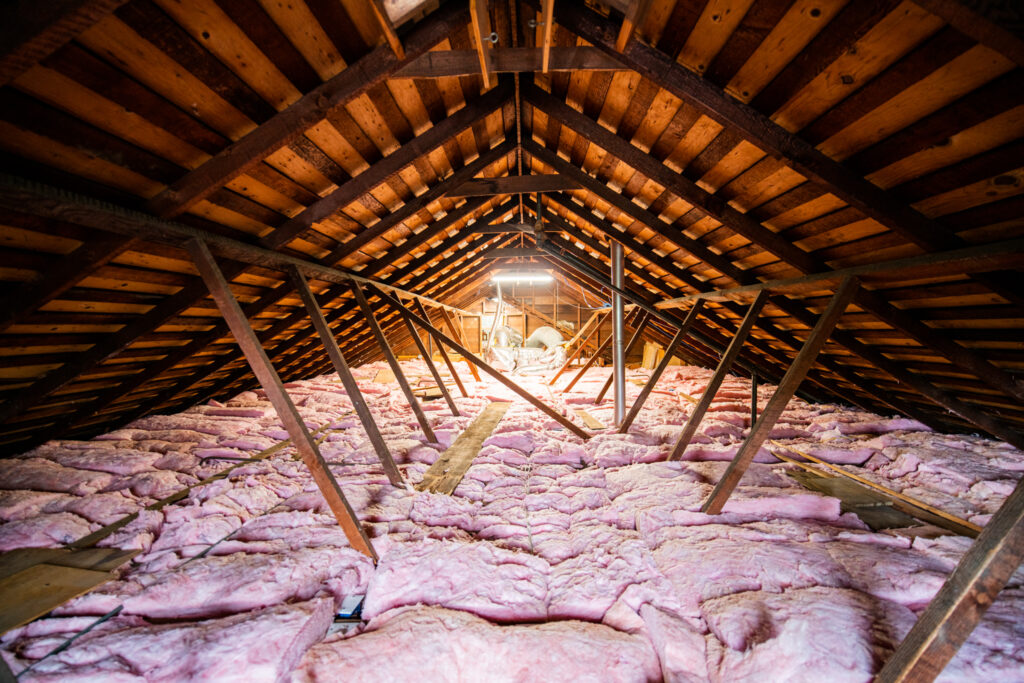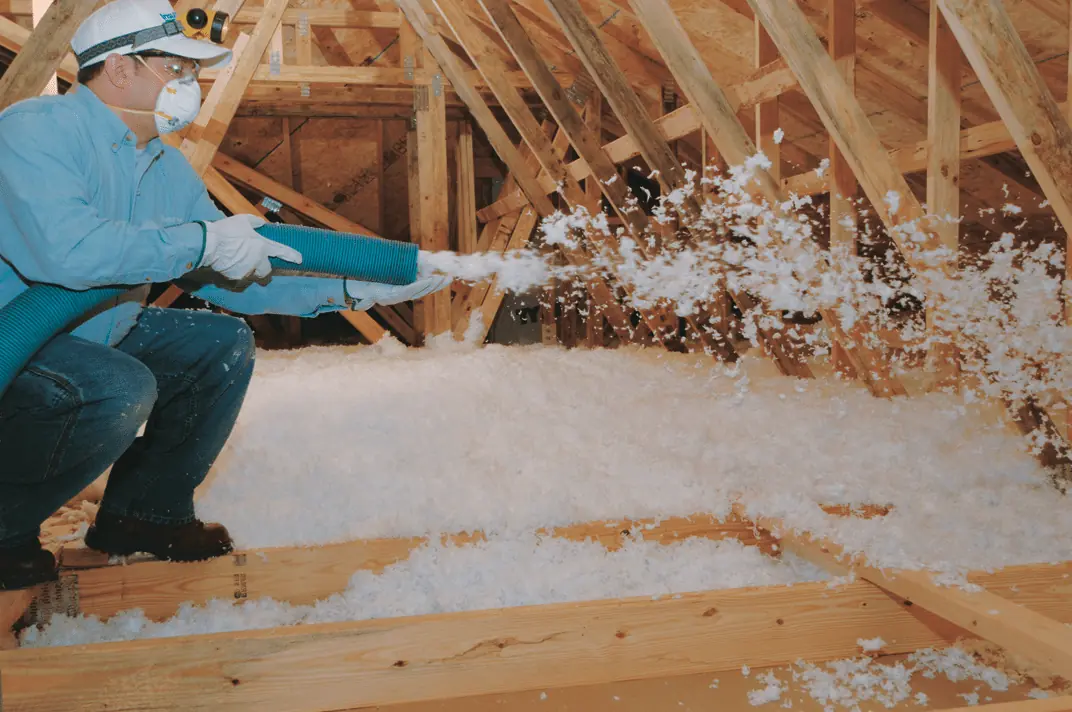Why Attic Insulation DFW is Essential for Energy Effectiveness in Dallas-Fort Worth
Why Attic Insulation DFW is Essential for Energy Effectiveness in Dallas-Fort Worth
Blog Article
Discover the Different Types of Attic Insulation and Their One-of-a-kind Advantages for Your Home's Power Effectiveness

Fiberglass Insulation
Fiberglass insulation is among the most commonly used products for attic insulation because of its superb thermal efficiency and cost-effectiveness. Made up of little glass fibers, this material properly catches air, developing a shielding barrier that helps preserve regular interior temperature levels. Its high R-value per inch makes it particularly reliable at standing up to warmth transfer, which is essential for energy preservation in homes.
Installation of fiberglass insulation is fairly uncomplicated, commonly available in batts or loose-fill types, suiting numerous attic room arrangements. Additionally, it is immune and non-combustible to moisture, lowering the threat of mold advancement. This sturdiness adds to its longevity, making fiberglass a practical long-lasting investment for property owners.
Furthermore, fiberglass insulation is often manufactured from recycled materials, which improves its eco-friendliness. The material can also add to soundproofing, decreasing noise transfer between areas. While it is important to use protective gear throughout installment to stay clear of irritation from the fibers, the total benefits of fiberglass insulation, including power savings and ecological factors to consider, make it a prominent option for improving attic room performance and promoting a comfy living environment.
Spray Foam Insulation
Spray foam insulation is a very effective choice for attic insulation, understood for its remarkable air sealing and thermal performance. This ingenious insulation material is composed of a mixture of isocyanate and polyol material, which, when incorporated, increases swiftly to fill up gaps and tooth cavities in the attic room space. Its capability to adhere to different surfaces guarantees a continuous obstacle versus air leaks, considerably decreasing warm loss throughout colder months and warmth gain during warmer seasons.
One of the key advantages of spray foam insulation is its high R-value per inch, which implies it offers exceptional thermal resistance in a fairly slim application. This is especially helpful in attics where room is usually minimal. Additionally, spray foam can aid reduce wetness accumulation, minimizing the danger of mold and mildew growth, which can be detrimental to both the framework and interior air top quality.
While the first price of spray foam insulation may be greater than traditional alternatives, its long-lasting power savings, paired with enhanced convenience and improved home worth, make it a rewarding financial investment for property owners looking for enhanced energy performance. Attic Insulation DFW. Generally, spray foam insulation stands out as an efficient remedy for optimizing attic room insulation
Cellulose Insulation

Cellulose insulation is a popular option for attic room insulation, mostly composed of recycled paper items treated with fire resistants. This eco-friendly alternative is recognized for its outstanding thermal performance, properly minimizing warm transfer in both summer season and winter season. The thick composition of cellulose enables it to fill voids and spaces in attic areas, offering a seamless barrier against air leaks.
One of the substantial his comment is here benefits of cellulose insulation is its ability to stand up to mold and insects, owing to the fire resistant therapies made use of during production. Additionally, it boasts a high R-value per inch, which equates into remarkable energy performance. Property owners can expect reduced cooling and heating prices as a result of improved insulation.
Installment is commonly accomplished via blowing loose cellulose right into the desired area, permitting a fast and reliable process. This technique likewise reduces disruption to the existing framework. Cellulose insulation has a reasonably reduced ecological impact, as its production procedure makes use of recycled products, adding to lasting building methods.
Rock Woollen Insulation
Amongst the different options for attic insulation, rock wool, likewise understood as mineral woollen, stands apart because of its remarkable thermal and acoustic efficiency. Made from natural or recycled materials, rock wool is created by melting rock and rotating it right into fibers, leading to a product that provides superb insulation residential properties.
Among the considerable advantages of rock wool insulation is its high R-value, which indicates its effectiveness in withstanding heat flow. This characteristic not only enhances power effectiveness however likewise adds to maintaining a comfortable indoor temperature year-round. Additionally, rock wool is inherently fireproof, making it a more secure choice for homes as it can endure high temperatures without melting or releasing toxic fumes.
In addition, rock wool insulation stands out in soundproofing capacities, successfully reducing sound transmission in between areas and from outdoors resources. In general, rock wool insulation gives a thorough service for improving energy effectiveness, safety, and convenience in household settings.
Radiant Barrier Insulation
Glowing obstacle insulation acts as an effective remedy for lessening warmth transfer in attic rooms, particularly in warmer environments. This type of insulation works by showing convected heat away from living areas, therefore reducing the amount of warmth that goes into a home throughout heat - Attic Insulation DFW. Usually made up of a highly reflective material, such as aluminum foil, radiant obstacles are installed in attics, dealing with the roofing, where they can obstruct incoming heat from the sun
The primary benefit of radiant obstacle insulation is its capability to reduced cooling expenses. By showing warm rather than absorbing it, glowing obstacles can assist maintain an extra steady indoor temperature, minimizing the workload on cooling systems. This efficiency equates into reduced energy expenses and boosted convenience for homeowners.
In addition to energy savings, glowing barriers can likewise add to improved interior air top quality. By decreasing warm accumulation, they assist minimize humidity degrees, which can avoid mold development and boost overall air blood circulation. When mounted properly, radiant barrier insulation can be an invaluable addition to any kind of energy-efficient home, making it a deserving consideration for home owners looking to enhance their attic room insulation method.
Verdict
In conclusion, comprehending the numerous kinds of attic insulation-- fiberglass, spray foam, cellulose, rock woollen, and glowing obstacles-- enables home owners to make informed decisions pertaining Read More Here to power effectiveness. By picking the appropriate insulation material, considerable reductions in energy prices can be achieved, along with Related Site enhancements in interior comfort.

In verdict, recognizing the different types of attic room insulation-- fiberglass, spray foam, cellulose, rock wool, and glowing barriers-- allows homeowners to make enlightened decisions regarding power efficiency.
Report this page